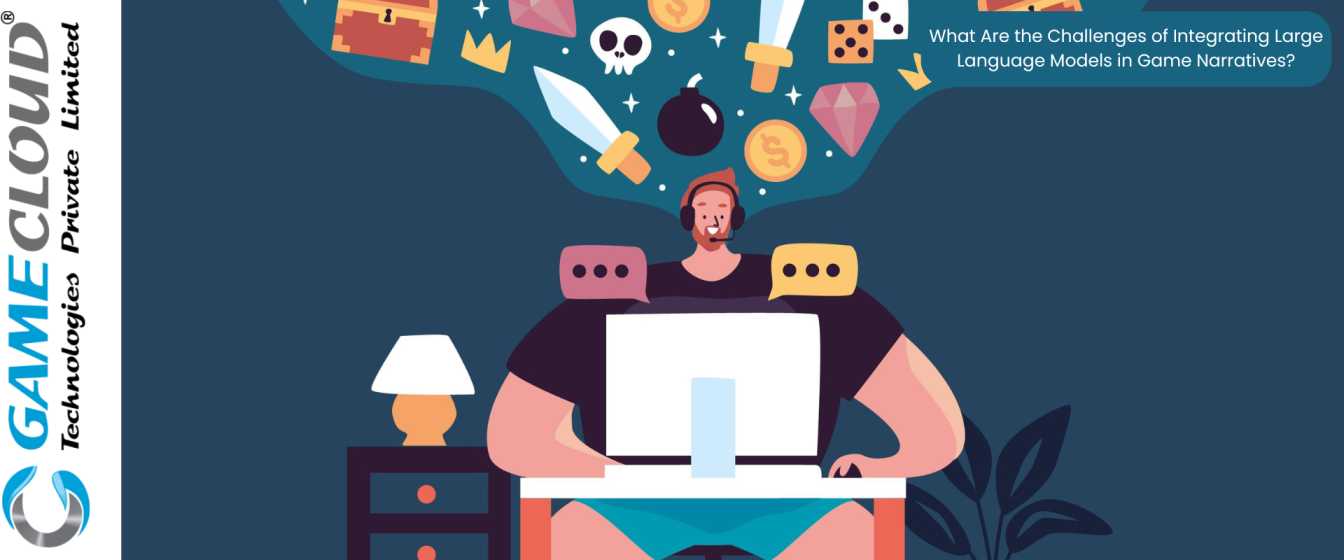
The rise of LLMs has revolutionized various fields, including game development. These advanced tools bring immense potential for creating dynamic, engaging narratives. However, blending them into interactive storytelling presents notable hurdles. Let’s read more about the key challenges developers face when incorporating these technologies into game design.
Striking the Balance Between Freedom and Control
A major issue lies in balancing player freedom with narrative coherence. Language models can generate diverse text outputs, enabling players to interact with games in unexpected ways. While this opens up exciting possibilities, it risks derailing the storyline if the responses diverge too far from the intended path. For instance, in a branching narrative game, a player could input actions or dialogue that lead to narrative contradictions or dead ends.
A study by Statista in 2023 reported that 64% of game developers highlighted narrative coherence as a critical factor in enhancing player engagement. Achieving this requires carefully designed constraints to ensure that generated content aligns with the game’s central themes and plotlines. In open-world games, where player choices often dictate story progression, these challenges are magnified. Developers must strike a delicate balance, crafting an experience that feels both personalized and cohesive.
Maintaining Consistency Across Complex Narratives
Consistency is essential for immersive storytelling, particularly in games with intricate plots and deep lore. LLMs can sometimes produce text that contradicts earlier events or established in-game rules. This not only breaks immersion but can frustrate players invested in the narrative. For example, in a science fiction game, a character might provide contradictory responses about technological capabilities if the language model generates text without properly referencing previous inputs. Addressing this requires extensive data training and implementation of contextual memory systems. However, these measures can significantly increase the complexity of development.
A 2024 industry report noted that narrative inconsistencies are among the top three reasons players lose interest in story-driven games. Ensuring alignment between AI-generated content and predefined story elements is critical to maintaining player trust and engagement.
Balancing Creativity With Realistic Responses
LLMs excel at generating creative outputs but can sometimes produce responses that feel out of place or unnatural. In immersive games, even small inconsistencies can disrupt the experience. For instance, a medieval character casually using modern slang or idioms would clash with the setting. To address this, developers often train models on curated datasets that reflect the desired linguistic style and tone. Despite such measures, unpredictable outputs occasionally occur. Fine-tuning these models involves significant testing to ensure a balance between creativity and believability. Striking this balance is particularly crucial in genres like fantasy or historical fiction, where authenticity directly impacts immersion.
Managing Resource Constraints and Technical Limitations
Implementing LLMs in games comes with hefty computational and financial requirements. Real-time text generation, essential for player interaction, demands robust hardware and optimized algorithms to prevent delays. These technical constraints can be a significant barrier for smaller studios. The cost of training models and maintaining infrastructure often exceeds the budgets of smaller teams. Additionally, integrating LLMs adds complexity to development pipelines, requiring collaboration between designers and AI experts to test, fine-tune, and debug the system.
Some studios mitigate these challenges by adopting hybrid approaches—combining traditional scripting with AI-generated elements. While this reduces the dependency on LLMs, it limits the flexibility that makes these tools so appealing for interactive storytelling.
LolzSoft: Redefining Fun, Innovation, and Meaning in Gaming
At LolzSoft, we are passionate about creating innovative and engaging video game experiences. Our focus lies in crafting games that not only entertain but also inspire and educate players. As part of GameCloud Technologies, we take pride in designing meaningful gaming experiences that resonate with diverse audiences. With a history rooted in rapid game prototyping, we are now exploring fresh ideas and new ventures. At LolzSoft, creativity and collaboration drive our mission to redefine the future of gaming.
Conclusion
Integrating large language models into game narratives opens up exciting possibilities but comes with significant challenges. Developers must address issues like maintaining narrative coherence, ensuring consistency, and overcoming resource constraints to create compelling experiences. With studies showing that immersive storytelling can boost player retention by up to 40%, the effort to integrate these tools effectively is well worth it. As technology evolves, game developers will continue finding innovative ways to harness the potential of LLMs, enriching the future of interactive storytelling.
For Know More Contact-Now
FAQ: What Are the Challenges of Integrating Large Language Models in Game Narratives?
What is the main challenge in balancing player freedom with narrative coherence?
Integrating LLMs allows players to interact with games in unexpected ways, but this flexibility can lead to narrative contradictions or dead ends. Developers must implement carefully designed constraints to ensure that generated content aligns with the game’s central themes and maintains a cohesive storyline.
How can developers maintain consistency in complex game narratives using LLMs?
Consistency can be achieved by employing contextual memory systems and extensive training on game-specific datasets. These tools help LLMs reference prior events and established lore, reducing the risk of narrative contradictions and maintaining player immersion.
How do LLMs impact the balance between creativity and realistic responses in game narratives?
While LLMs excel at generating creative content, they can sometimes produce outputs that clash with the game’s tone or setting. Developers address this by training models on curated datasets and conducting rigorous testing to ensure a balance between imaginative responses and believability.
What are the technical and resource limitations of integrating LLMs into games?
Implementing LLMs requires significant computational power, robust infrastructure, and financial resources, making it a challenge for smaller studios. Real-time text generation demands optimized hardware and algorithms, which can increase costs and complicate development pipelines.
